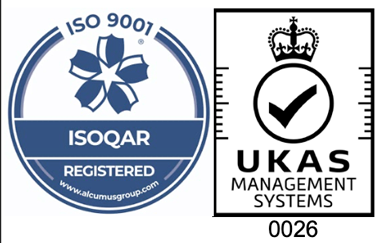An Expert Guide to Water Jet Cutting
18th May, 2024
Water jet cutting services offer industries an efficient method to cut materials for the fabrication of parts and components, and it has become one of the most popular cutting methods across a variety of industries due to its versatile and precision cutting.
This expert guide to water jet cutting will highlight everything you need to know, from what water jet cutting is and how it works to the materials suitable for the process, the benefits and advantages and how much it costs.
What is water jet cutting and how does it work?
Water jet cutting machinery cuts and shapes a wide range of materials, using a high-pressure stream of water to erode a narrow line in the material. This stream of water is directed through a nozzle and follows a template provided on a configuration panel.
The water jet cutting process involves an ultrahigh-pressure pump is used to generate a stream of water that has a pressure rate of up to 94,000 psi. Using a tiny jewel orifice, this pressure is converted into velocity, which creates a stream that is as small as human hair and can cut through soft materials, like softer rubber materials including natural rubber, foam rubber and some sponge rubber.
However, to cut through tougher materials, a garnet abrasive is pulled into the waterjet stream, increasing the cutting power by up to 1,000 times. As the abrasive is added to the water jet nozzle, using a mixing tube, the water jet can easily switch between pure water and abrasive water jet cutting, providing greater versatility.
Whilst water jet systems can vary, the majority of machines consist of three main components: a pump, a table, and a controller. The high-pressure pump generates pressurised water, which is required for the cutting process. The table consists of an X-Y nozzle mechanism, which has an attached garnet hopper, and a catcher tank. Finally, the controller adopts software that operates the system, controls the motion and position of the nozzle.
What are the different types of water jet cutting?
There are two forms of water jet cutting: pure water jet cutting and abrasive water jet cutting. Whilst their purposes are similar, their cutting capabilities vary and are therefore used for different applications.
- Pure Water Jet: typically used to cut softer materials quickly and accurately, materials that pure water jets can cut through include rubber, foam and other gasket materials
- Abrasive Water Jet: when cutting through tougher materials, abrasive water jet cutting is the ideal option. Once the pure water jet is created, an abrasive is pulled into the head and mixed with the water to create an abrasive water jet stream. This can cut through almost any other material across a range of thicknesses, including metals (like hardened tool steel, stainless steel, aluminium, copper and titanium), non-tempered glass, composites, laminates, stone and most ceramics.
What materials are suitable for water jet cutting?
Water jet cutting is incredibly versatile and can handle a variety of materials, meaning it is an effective tool and ideal choice for industries from manufacturing to automotive and aerospace. These materials include:
What are the benefits of water jet cutting?
There are several benefits and advantages of water jet cutting. These include:
- A cold-cutting process: since water jet cutting involves this type of process, there is no risk of melting or tearing and it doesn’t change the material properties.
- High pressure: compared to other cutting machinery, a water jet uses high pressure meaning they can cut through more materials and an abrasive water jet can cut through virtually any material, no matter their thickness.
- Precision: the precision nozzle used on water jet cutting machinery allows for cutting to occur in any direction, ensuring there are no frayed edges and no need to use a secondary finishing process.
- Safe output: no hazardous outputs, like dust, fumes and gases, are emitted when using a water jet method, meaning it is safe to use.
- Quick set-up: the set-up process for water jet cutting projects is quick and easy, and it is simple to switch between pure water and abrasive water jet methods.
There are many benefits of choosing bespoke rubber products or harder materials for your project or application, and utilising water jet cutting can help ensure your materials are suitable to use.
How much do water jet cutting services cost?
The price of water jet cutting services varies depending on the size and type of material that needs to be cut for your bespoke project or application. To discuss the custom needs of your project, contact the Aquaseal Rubber team for a direct quote based on your requirements.
Choosing Aquaseal Rubber to support your project
With a range of key factors when choosing a rubber manufacturer to consider, it is important to understand the support you can receive throughout your project.
At Aquaseal Rubber, we have worked with a range of clients to complete bespoke projects using our high-quality, robust and heavy-duty water jet cutting machinery. We provided rubber plates and rubber seals for different clients in varying industries using our water jet cutting services.
To learn more about our water jet cutting services and how we can support your project, or to place an order, contact us today.


